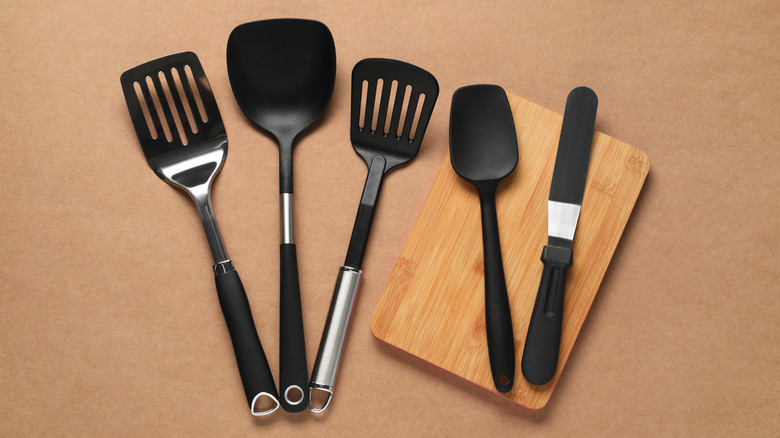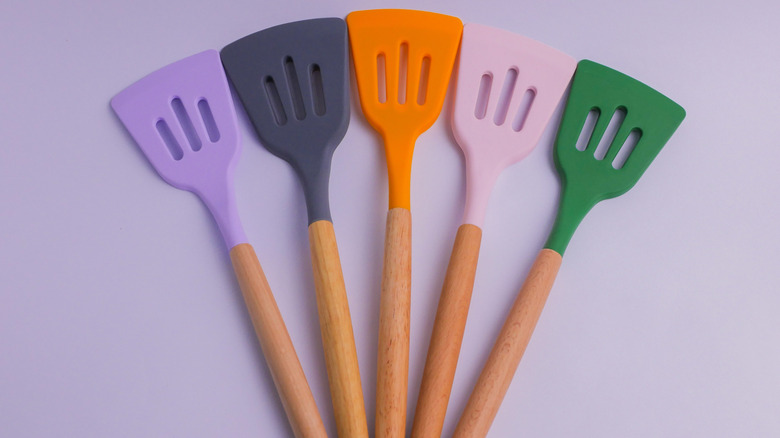The Spatula All Home Cooks Need, According To Chefs
We may receive a commission on purchases made from links.
If, in a moment of madness, you bought every utensil on the market, you'd not only have an overstuffed kitchen, but also lots of really useful utensils that would go underappreciated. To save you the space, expense, and embarrassment, we asked pro chefs what kitchen gadgets are worth the investment, and discovered that the spatula that should be in every home. And to hone that purchase even further, Michelle Morey, Maine mom and food blogger at Barefoot in the Pines, pointed us in the direction of silicone spatulas.
"They're cheap, and they get every single ounce of batter out of a bowl," Morey says. "They're heat-resistant enough to cook with, and then are so flexible that they work with you, not against you." Morey is particularly fond of smaller models, noting that they are great for getting the last morsel from jam and jelly jars. "Make sure to get a good one where the head and handle are all one piece. They're easier to clean and they don't break easily," she notes.
Silicone spatulas can also resist heat over 480 degrees Fahrenheit, giving them a distinct edge on plastic spatulas, which run the risk of melting at any temperature above 350 degrees Fahrenheit. The silicone variety also won't scratch your pans — even the nonstick ones that seem to get marked up if you so much as look at them wrong. And silicone's own nonstick surface makes them easy to clean. Adding a silicone spatula to your kitchen utensil tool belt is a must, but there are also a few details one should keep in mind.
Things to keep in mind about silicone spatulas
Thanks to their flexibility and durability, silicone spatulas deserve top billing in your kitchen — just make sure to purchase one that's actually food-grade quality. That should go without saying, but since silicone spatulas made their entrance on the kitchen scene in the 1990s, non-food-grade versions have been passed off as the real deal. Food-grade silicone is regulated by the Food and Drug Administration, and doesn't include harmful chemicals like BPA and phthalates (the same chemicals which make vintage tupperware great for collecting but less so for use). If you have a hard time finding a food-grade silicone spatula, this Di Oro set is not only BPA-free, but also comes 3 to a set.
One other thing to keep in mind is that a silicone spatula may not be the best choice for every occasion. They're flexible and useful for easy-to-flip or lightweight food items like small pancakes, and helpful for those times when you need to pry the waffle off the waffle maker. However, for heavier or more complex food that requires flipping (think burgers or steak), the sturdiness of a stainless steel spatula might be a better choice. While not as gentle on your cookware, stainless steel is also free of harsh chemicals, the same way food-grade silicone spatulas are. Now is the time to double-check your utensil drawer (or bucket) and make sure you have the best options for bringing your next recipe to life.

